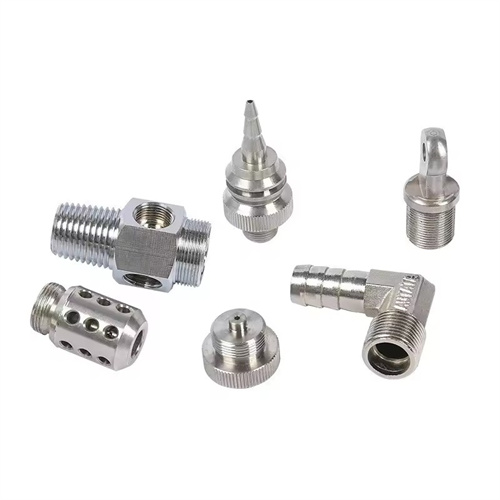
CNC Turning
CNC Turning is a subtractive manufacturing process where a cutting tool removes material from a rotating workpiece to create cylindrical or rotationally symmetric parts. The workpiece is held in a chuck and rotated at high speeds, while the cutting tool moves linearly to shape the material. CNC turning is widely used for producing components such as shafts, rods, bushings, custom fasteners, and gears. The process is highly precise, efficient, and capable of producing complex geometries with tight tolerances.
We have rich experience and technical strength in CNC Turning processing. Our team consists of a group of experienced engineers and technicians who are proficient in CNC programming, tool selection, cutting parameter adjustment, and other related knowledge. They can provide professional machining solutions and technical support to customers.
Key Features of CNC Turning:
High Precision: CNC turning can achieve tolerances within micrometers, ensuring high accuracy in the final product.
Efficiency: The process is automated and fast, making it ideal for both prototyping and high-volume production.
Material Versatility: CNC turning can work with metals (e.g., aluminum, steel, titanium, brass), plastics, and composites.
Complex Geometries: Advanced CNC turning machines can produce intricate features such as threads, grooves, tapers, and contours.
Repeatability: Once programmed, CNC turning machines can produce identical parts consistently, ensuring uniformity in mass production.

Common CNC Turning Operations:
Facing: Creating a flat surface on the end of the workpiece.
Turning: Reducing the diameter of the workpiece to create cylindrical shapes.
Drilling: Creating holes along the axis of the workpiece.
Grooving: Cutting grooves or channels into the workpiece.
Threading: Creating internal or external threads.
Knurling: Adding a textured pattern to the surface for better grip.

Applications of CNC Turning:
Electronics
In the electronics industry, CNC turning is used to produce small, high-precision components such as connectors, pins, and housings. These parts are critical for the functionality and reliability of electronic devices.
Application Examples:
Connectors: CNC-turned connectors ensure precise and reliable connections in circuit boards and electronic devices.
Pins: Precision-turned pins are used in connectors, switches, and other electronic components.
Housings: CNC-turned housings protect sensitive electronic components and ensure proper alignment.
Medical Devices
In the medical device industry, CNC turning is essential for manufacturing high-precision components such as surgical instruments, implants, and diagnostic equipment. The process ensures compliance with strict regulatory standards and delivers parts with exceptional accuracy and surface finish.
Application Examples:
Surgical Instruments: CNC-turned components for scalpels, forceps, and other tools ensure precise dimensions and smooth surfaces.
Implants: Custom-turned implants, such as orthopedic screws and dental prosthetics, are tailored to individual patient needs.
Diagnostic Equipment: CNC-turned parts for MRI machines, X-ray systems, and ultrasound devices ensure reliable performance.
Hardware Tools
In the hardware tools industry, CNC turning is used to manufacture high-precision components such as wrenches, pliers, and drill bits. These parts require high accuracy and durability to ensure the performance and safety of tools.
Application Examples:
Wrenches: CNC-turned wrenches provide precise and reliable tightening and loosening of bolts and nuts.
Pliers: Precision-turned pliers ensure accurate and durable performance in various applications.
Drill Bits: CNC-turned drill bits provide precise and efficient drilling in various materials.
Sports Goods
In the sports goods industry, CNC turning is used to manufacture high-performance components for equipment such as bicycles, golf clubs, and fitness machines. The process enables the production of lightweight, durable, and precise parts.
Application Examples:
Bicycle Components: CNC-turned parts like cranks, pedals, and hubs enhance the performance and durability of bicycles.
Golf Clubs: Precision-turned shafts and club heads improve accuracy and performance.
Fitness Equipment: CNC-turned components for treadmills, weight machines, and other fitness equipment ensure durability and smooth operation.

CNC turning is a critical manufacturing process that offers high precision, efficiency, and versatility. Its applications span across industries such as electronics, medical devices, hardware tools, and sports goods, where high-quality, custom-designed cylindrical parts are essential. By leveraging CNC turning, manufacturers can produce complex and precise components with tight tolerances, ensuring optimal performance and reliability in their products.